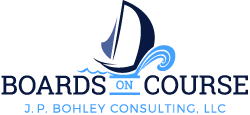Tip #49 Additional Tips to Encourage Creative Thinking in Your Board Meetings
In this Tips for Effective Boards, we continue our discussion of tips to encourage creative thinking. We’ll focus first on two techniques: 5 Whys and Mind Mapping and then conclude with a few other ideas.
5 Whys. This technique also called Repetitive Whys involves using the question Why multiple times to get to the root cause or “problem behind the problem.” Write down a specific problem or issue. Ask why this problem or issue occurs and write down the answer. Continue to ask Why and record the answer until the group feels the root cause has been identified. While asking Why five times can often result in an identified basic or root cause, in actual practice it may take fewer or more than 5 Whys to get to where the board wants to go.
Mind Mapping. A mind map is a visual representing ideas linked to and arranged in relation to a particular subject. First, write the title of an idea or issue that you would like to explore in the center of a flip chart or white board and draw a circle around it. Then, as the group comes up with related ideas or facts, draw lines out from the circled idea or issue and label these lines with the related ideas or facts. Finally, as the group comes up with additional ideas and facts draw new lines out from the circled idea or issue or if any new ideas and facts are related to ideas and facts already identified, then record these new ideas on lines drawn out from the already identified ideas and facts to which they are related. Additional tips for Mind Mapping include: set a time limit (bursts of 5 to 7 minutes are suggested), use simple words or phrases, print, use different colors for different ideas, use symbols, shapes, and images where you can, use underlining to emphasize, and use lines and arrows to show connections.
If you would like more information about the 5 Whys or Mind Mapping, you can easily find information via a web search of these techniques. Also, you can visit www.mindtools.com. Or you might want to check out Manager’s Guide to Effective Meetings by Barbara Streibel (McGraw-Hill, 2003). I find Streibel’s book to be a handy practical guide for conducting effective meetings.
A few other ideas follow: break up into small groups of board meeting participants to get everyone involved in expressing their ideas in a less formal setting, have individuals or the board as a whole identify counter-arguments for a major position the board may seem to be inclining towards too easily, role play persons from different stakeholder groups to understand their perspectives, and conduct a pre-meeting anonymous survey of members.
As you may remember, in our last few Tips for Effective Boards we have been discussing the 4 P’s for Building Your Board Team: Purpose, People, Plan and Process. In our upcoming Tips we will continue our discussion of the Fourth P: Manage Your Board Group Process Effectively and will focus on tips for managing disagreements proactively and constructively.
The 4 P’s incorporate insights from the Policy Governance® model developed by John Carver, from other governance writers and from the group dynamics and team-building literature.
Please take the time to check out the Policy Governance® model. It provides a comprehensive board governance design that supports and enhances effective group process. For more information about the Policy Governance® model click https://www.BoardsOnCourse.com/policy-governance or contact me at jpbohley@gmail.com.
I will be happy to customize a workshop for your board on any or all of the 4 P’s or on the Policy Governance® model which provides an excellent governance design for the 4 P’s. If you would like more information, please respond to this email or contact me via jpbohley@gmail.com.
To check out any of the other Tips for Effective Boards, click https://www.BoardsOnCourse.com/blog.
